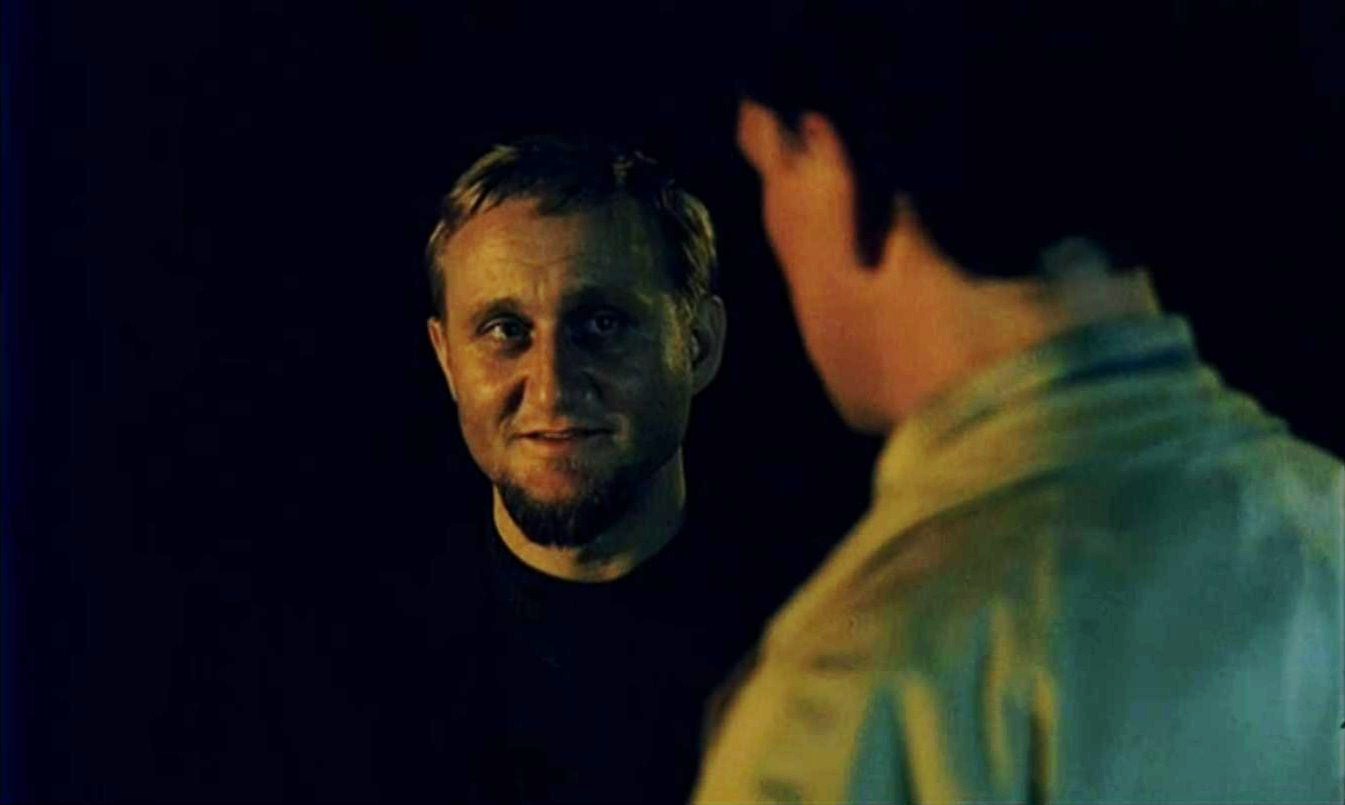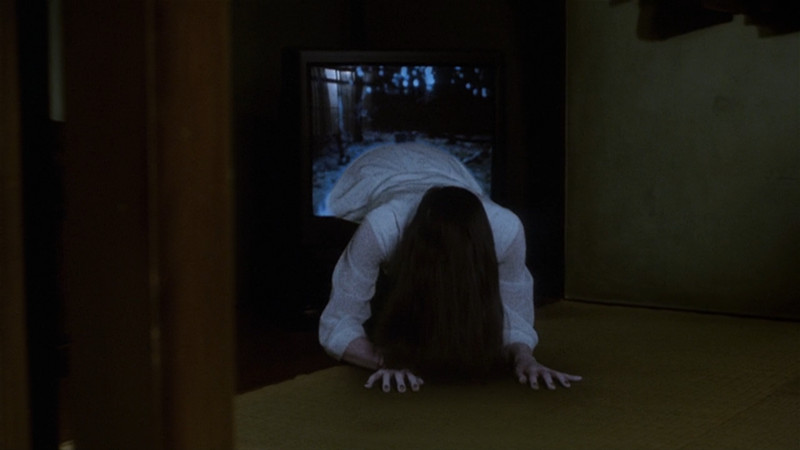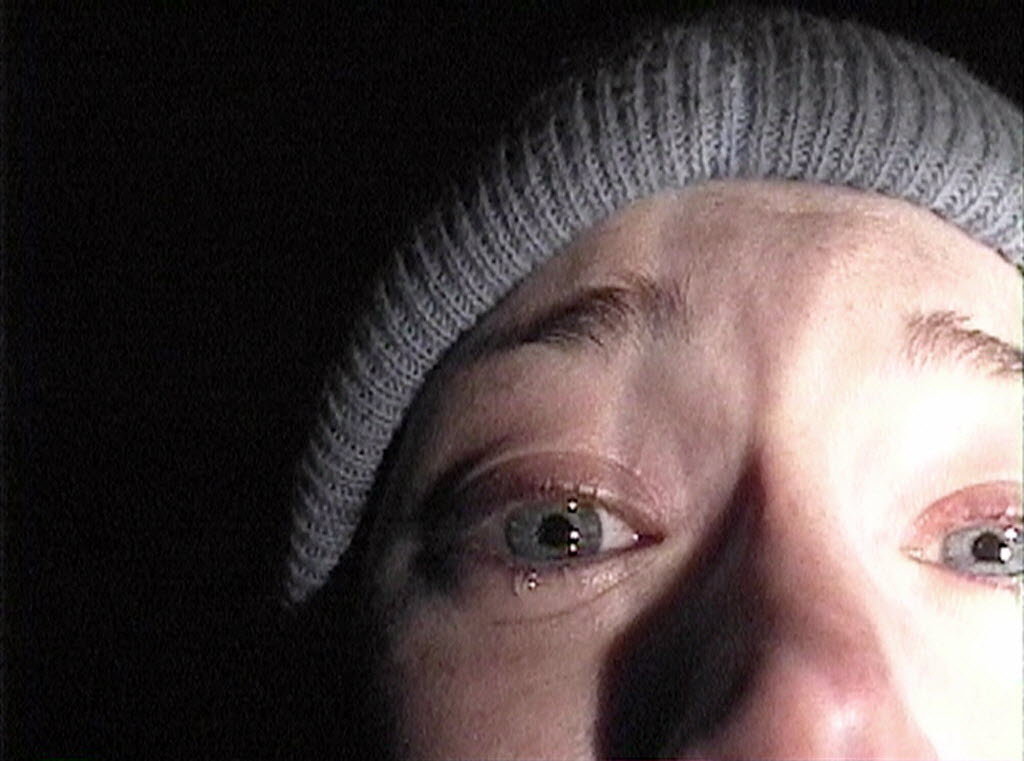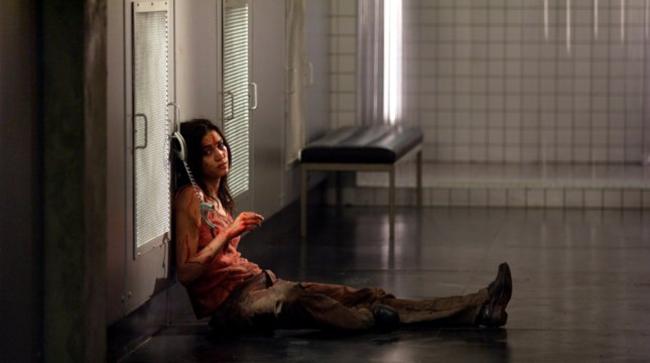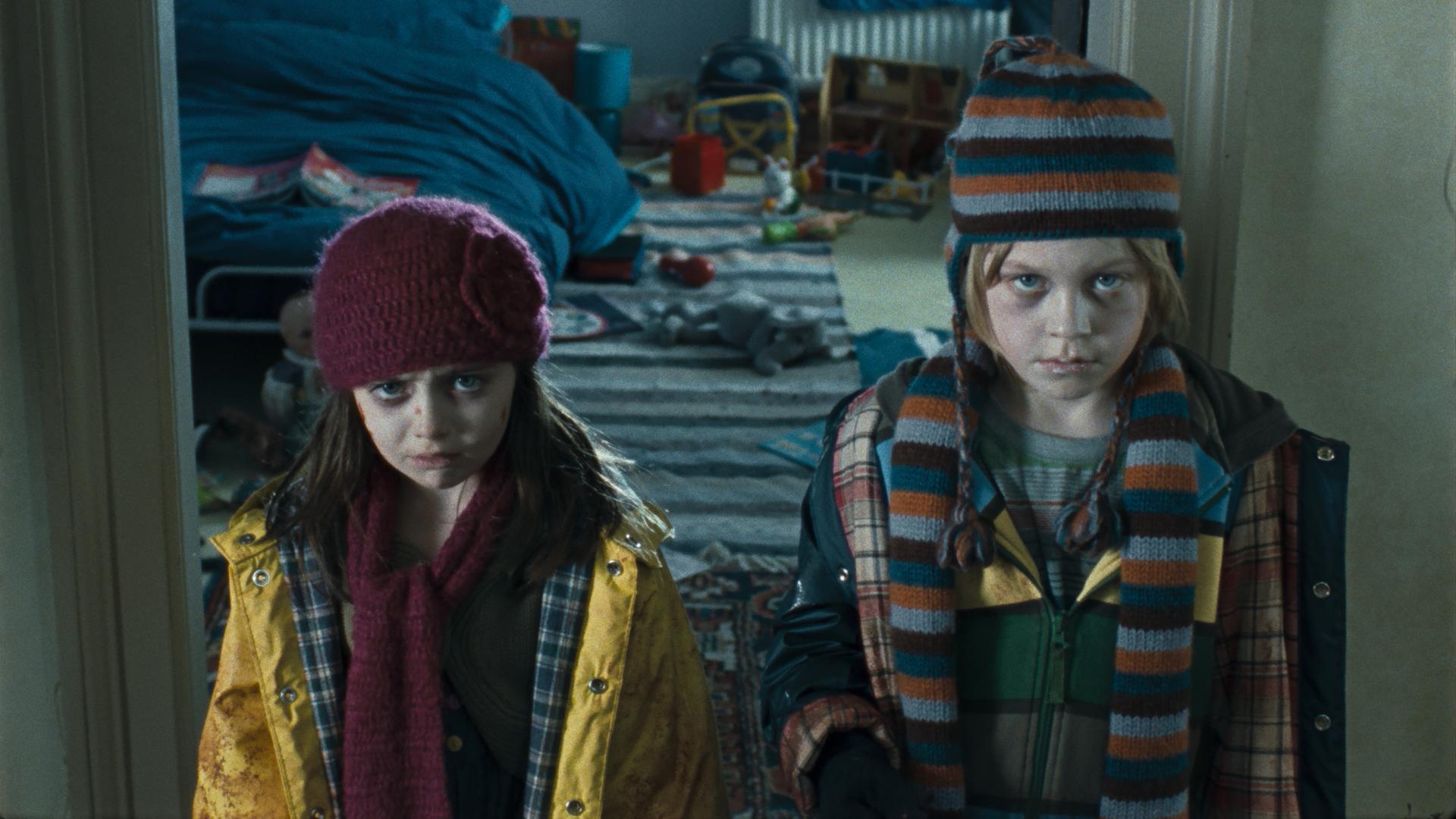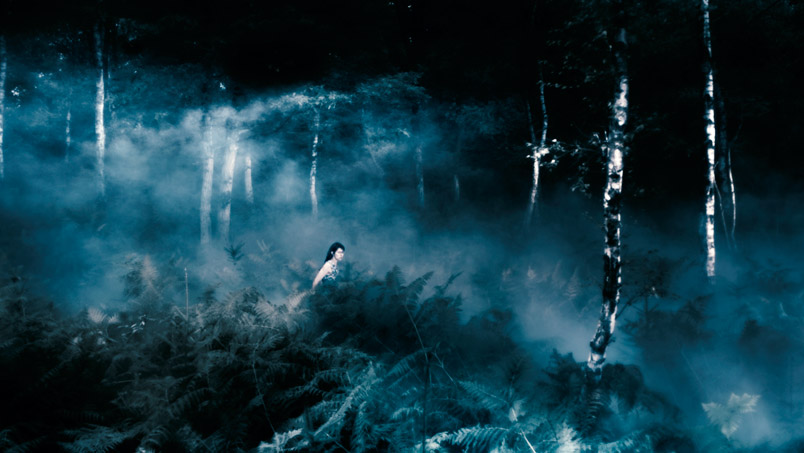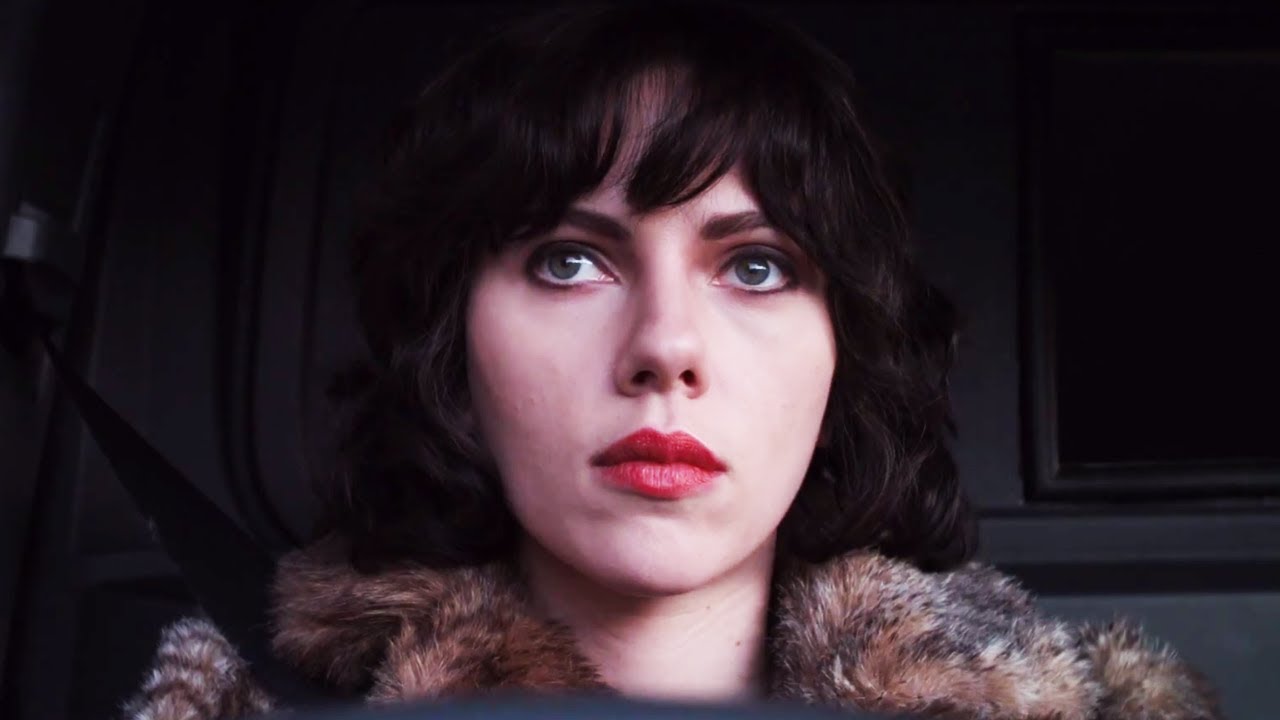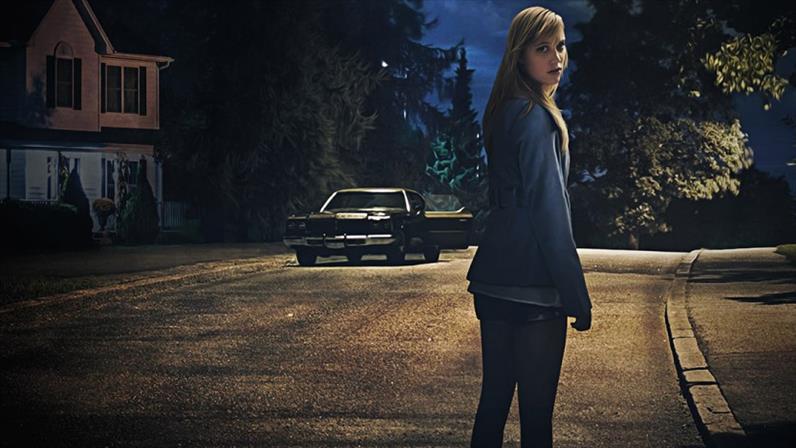8. The Vanishing (1988)
George Sluizer’s ‘The Vanishing’ is one part thriller and one part existential horror. Unusually structured, it plays on the fear that curiosity will drag humanity back down into a dark and silent abyss.
Hopping forwards and backwards in time, the movie chronicles a man’s (Gene Bervoets) obsession to discover the fate of his kidnapped wife (Johanna Ter Steege).
Darkness itself is a foe. Our protagonist comes to accept his wife is dead and even comes to forgive the killer, yet won’t have resolution until he knows the circumstances. Ultimately it’s summarised in a brilliant thought experiment: if the only way you could discover the details of the murder was to experience them yourself, would you do it? Can knowledge only be gained through experience? While he ponders these terms forwarded by the murderer, darkness looms closer and closer around him.
Contrasted with this unquenchable curiosity is an undeniable sense of inevitability. As different points the characters contemplate on what is “predestined”, choosing the action which they believe goes against fate. But have they really altered the future? It’s incredibly unsettling that such a simple story evokes so many fears at once: the inescapability of fate, the isolation of the individual, and that “black cannot exist without white”.
‘The Vanishing’ was described by Stanley Kubrick as the scariest film he had ever seen. As it tragically suggests, knowledge is the curse of humanity. Yet when you take it from him what is he? Man’s eternal pursuit for knowledge will inevitably reduce him to blackness once more.
9. Ring (1998)
Hideo Nakata’s ghost story is one of the most frightening of all modern horror films. Its scariness can be attributed partly to its restrained approach, and partly to the way that it slowly digs into fears of the inevitable.
Reiko (Nanako Matsushima) and her divorced husband Ryūji (Hiroyuki Sanada) attempt to save themselves and their son after viewing a cursed videotape which promises to kill them in seven days.
The fear provoked by ‘Ring’ is not death perse but death’s inevitability. The film succeeds in its minimalism; when the corpse finally pulls itself out from the well and out of the television screen at the very end it’s terrifying. It’s important to note that the curse in ‘Ring’ actually has an escape clause: to survive one only has to copy the tape and show it to someone else.
One must compromise the safety of another in reward for their survival, or in the case of the final scene of Reiko creating a copy for her son to show his grandfather, the survival of the next generation. It raises evolutionary fears of natural selection; the only apparent way to prolong the inevitable is to out-compete members of one’s own species.
Not only that, ‘Ring’ suggests that our own gaze makes us vulnerable. It’s the perfect urban legend: a videotape that will kill all that see it. It’s an existential anxiety that once a person sees something they can’t ‘un-see’ it. The memory of that thing will never be forgotten; it will linger somewhere in the back of their brain, endlessly repeating like the videotape, and one day it might just crawl back into reality.
Whilst the US remake ‘The Ring’ is a good film in its own right, and definitely worth watching; it owes nearly everything to this chilling original.
10. The Blair Witch Project (1999)
‘The Blair Witch Project’ is a rare example of a film which is terrifying upon first viewing, but much less-so than on subsequent sittings. So simple is the story and so simple is the execution, that it manages to use the audience’s imagination against them.
The movie claims to be the edited footage of three documentary filmmakers who disappeared in the Maryland forest in search of ‘the Blair Witch’.
Unlike other horror films like ‘The Texas Chain Saw Massacre’ which borrowed documentary elements and later films which partially included found footage in the narrative such as ‘Cannibal Holocaust’, ‘The Blair Witch Project’ claimed to be wholly real footage. Once more, the single POV and improvisation of the actors makes the film feel especially real. As such the audience is forced to make the distinction between what they believe is fact and what they believe is fiction.
Unusually the scariest moments are when the film goes blank and only breathing and random noises are to be heard. Darkness is a visceral fear in that it could cloak any number of hazards: a cliff, a sabre-tooth cat; however in ‘The Blair Witch Project’ it becomes more existential. In absence of knowledge we turn to imagination. The twist is there is no monster; she occupies a space off-frame and in our own minds.
Just as the bickering students in ‘The Blair Witch Project’ become lost and isolated in the unfamiliar territory of the forest, so too are we alone in our own interpretation of the movie. No person shall ever see the same monster you conjure from the darkness; that demon is entirely your own.
11. Martyrs (2008)
It’s no understatement to call Pascal Laugier’s ‘Martyrs’ a barely watchable film. Recommendable only to the few, it offers a violent assault on the senses and a nihilistic descent into the meaning of human suffering.
A film which starts dark and somehow manages to get more horrifying as it goes along, it follows Lucie’s (Mylène Jampanoï) pursuit for revenge on the people who kidnapped and tortured her as a child, which inevitably thrusts her friend Anna (Morjana Alaoui) into a similar situation of depravity and abuse.
There’s no escaping the fact that it’s a torture-porn film. This choice of genre is necessary however, because unlike other movies which simply show depravity for its own sake, ‘Martyrs’ uses it to pose existential questions. The nausea that the film elicits is only in part due to the brutal acts that its shows explicitly. The nausea that it provokes is also existential; it’s having any meaning behind the brutality snatched away and debunked.
Strangely enough the most depraved acts and the darkest, most nihilistic musings occur in well-lit places were safety ought to be found. Darkness is found in the brightest of places. ‘Martyrs’ is a painful film to watch, yet there’s a certain degree of catharsis to be reached; a sigh of relief when the credits finally roll.
The true terror of the film actually comes afterwards when the audience is forced to consider what they’ve just experienced. It poses a paradox: the film’s suffering was meaningless in the end, yet Laugier purposely teaches us that it is meaningless. Was the suffering, therefore, truly meaningless?
It’s these weird contradictory acts of brutality which make ‘Martyrs’ such a polarising film. As an intertitle at the end explains; “Martyr” actually means “witness”. Suffering exists so it may be seen; the question is: who is watching?
12. The Children (2008)
Somewhat underappreciated, Tom Shankland’s ‘The Children’ is one of the best British horror films in recent memory. A chilling movie (impressive considering it takes place entirely during the day); it digs deep and latches onto our fears of the younger generation.
A Christmas celebration between two families at an isolated retreat takes a turn for the worst when the children become inexplicably ill and begin attacking their parents.
From the murderous, pigtailed Rhoda in ‘Bad Seed’ to the blonde twins Elias and Lukas in ‘Goodnight Mommy’, the horror genre has had a fascination with children. Children represent a state of innocence; it’s shocking to see the purest of things corrupted. In ‘The Children’ however, the freezing and white landscape forewarns that the innocent can also be the cruellest and most indifferent.
Also frightening is the thought that children are the things that will supplant us; they are simply younger, healthier versions of ourselves who aim to acquire our lives. Although there is a suggestion that their violent behaviour is the result of some illness, no real and satisfying cause is given.
They can’t be understood; their simple minds live in an animalistic state where true human morality and compassion has yet to develop. Shankland presents these “monsters” in a sympathetic lens; they’re children and have no understanding of what they’re doing; their murder is purely instinctual.
Striking a cold nerve with the occasional dose of black humour, ‘The Children’ is a well-made horror movie in nearly all regards. It plays on that existential fear that our sons and our daughters, without their own knowing, will stop at nothing to inherit our place in the world.
13. Antichrist (2009)
For all its beauty and nausea, Lars von Trier’s highly controversial, highly experimental ‘Antichrist’ obscures nearly any interpretation into its message and merits. It’s a semi-Biblical nightmare where reason is arbitrary and chaos reigns.
Following the death of their child, an unnamed couple, therapist “He” (Willem Dafoe) and patient “She” (Charlotte Gainsbourg), retreat to an isolated cabin. Nature soon sends them on a downwards spiral into insanity, cruelty and despair.
One of the clear concerns of a movie titled “Antichrist” is theodicy. Why would a benign and omnipotent God allow evil to exist? Von Trier’s response is that God is not the helmsman of the world, rather anarchy is.
The Garden of Eden has been turned into an unsettling forest, and the Tree of Knowledge is now a dead network of roots and hands where the couple copulate. The Father, the Son, and the Holy Ghost have become a deer with a stillborn doe, a decaying baby crow, and a self-disembowelling fox. What do these transformations mean?
The film is ultimately a conflict between man, who tries to find an explanation to all things, and nature, which is amoral; an object of chaos. The universe punishes the masculine, authoritative voice of reason with madness.
Von Trier sets up the story as if there were a clear goal in mind; the titles are all in chalk like a classroom lesson and the story is tightly structured in chapters. But what moral is really learnt? Each shot, executed poignantly by cinematographer Anthony Dod Mantle, has the thematic depth of an abyss. Any clear answer is shrouded.
Perverse, hypnotic, and impenetrable; ‘Antichrist’ is another film which would be considered unbearable for most. You’ll see inside the mind of anarchy, and it might just open a dialogue.
14. Under The Skin (2014)
Jonathan Glazer’s science fiction horror was acclaimed by many critics as the best film of 2014. A masterpiece of existentialism, it reduces humanity simply to a vulnerable sheath of skin.
An alien posing as a strange, beautiful woman (Scarlett Johansson) travels Scotland, luring lonely men to their demise in her lair.
From the very opening of wormholes and garbled syllables ‘Under The Skin’ is a cryptic film. Similar to other science fiction movies, notably Nicholas Roeg’s ‘The Man Who Fell To Earth’, it doesn’t give any immediate pretext that its protagonist is alien.
The film plays out like a trance; Johansson’s near-mute performance of the being who transforms from cold and calculating predator to sympathetic prey is hypnotic. Glazer demands his audience to ask what exactly it means to be human, and whether it could be taught to an outsider.
The fear is that, on a physical level, humanity is nothing. The creepiest sequences show the naked alien inviting their undressed prey into a black pool. It’s chilling because humanity has been reduced literally (in the case of their nakedness against a blank backdrop) and figuratively (in the case of the alien’s manipulation of sexual desire) to its most elemental; it’s most defenceless.
It all ends on an unsettling note; the relationship between humanity and the extra-terrestrial is reversed: man has become the monster and the alien the victim. We don’t exist as we would like to think; we’re living behind a veil.
It’s a masterpiece in minimalism; and will ultimately leave you rattled to your very core. It makes you wonder: what really is “under the skin”?
15. It Follows (2015)
David Robert Mitchell’s ‘It Follows’ succeeds as one of the best horror movies of the new millennia because it play on humanity’s deepest fears. In the end no one is safe; intimacy can only defer the inevitable.
After contracting a curse through sex with her boyfriend, Jay (Maika Monroe) is perused by a supernatural entity which will kill her unless she passes it onto another.
It’s not the fear that we might die that is so lingering; it’s the fear that we will die. Although the “It” in “It Follows” remains nebulous, there are enough suggestions to assume that it represents death’s inevitability.
It’s a destructive force which, thanks to Disasterpeace’s dread-inducing score, feels like it’s everywhere. It’s to be found even in the apparent security of the neighbourhood. The final tracking shots of the creature silently following in the distance actually suggest a kind of acceptance; love has been valued over fleeing from the inescapable.
‘It Follows’ provokes another existential fear however, that the people closest to us are using us as an object for their own survival. Despite its contemporary allusions to STIs, the film occupies a space reminiscent of the 1980’s horror; a mix of the John Carpenter slasher where evil lurks in the suburbia and the David Cronenberg body horror where sex is a transmitter. Who to trust? While it certainly isn’t a puritanical film, ‘It Follows’ functions of the possibility that our most primal urges could destroy us.
‘It Follows’ is a great horror film because it taps into the fears which haunt every human being. It’s the knowledge that we all have something following us, and it’s only a matter of time before it catches up.
Author Bio: Kyle McDonnell is an aspiring filmmaker based in Sydney, Australia. He recently graduated from high school and hopes one day to emulate his screen heroes David Lynch and Ben Wheatley. When he’s not watching, writing or filming, he can be found listening to ‘The Smiths’, contemplating life.
